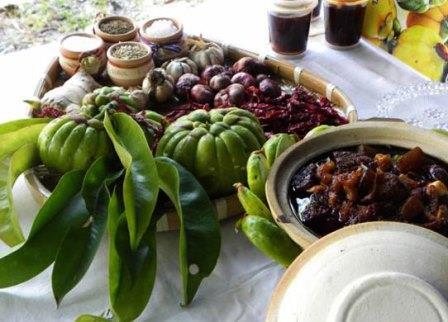Recommending dietary diversity for women

Measuring dietary diversity and quality can be costly and difficult but essential if we are to tackle the problem of poor dietary quality. A new indicator for looking at the quality of women's diets is a welcome step forward.
It is estimated that 805 million people around the world are chronically undernourished - the vast majority of these people live in developing countries. In addition, there are around 2 billion people with micronutrient deficiencies, caused in part from a lack of essential vitamins and minerals in their diets. Micronutrient deficiences, especially iron and vitamin A are common in women and can cause under-development and problems during childbirth.
A growing area of consensus is that dietary diversity, or eating a variety of foods across different food groups, is a good way to help improve the quality of diets. Measuring dietary diversity and quality can be costly and difficult but essential if we are to tackle the problem of poor dietary quality.
Since 2008, there has been an internationally recommended and validated 'minimum dietary diversity' indicator for infants and young children, based on the percentage of children consuming four or more unique food groups out of seven. Now consensus has just been reached on a comparable indicator for women.
The indicator was endorsed through a collaborative international effort led by the Food and Agriculture Organization of the UN (FAO) and the US Agency for International Development funded Food and Technical Assistance III Project (FANTA). The Women’s Dietary Diversity Project was designed to respond to the need for simple yet valid indicators of women’s diet quality, with a specific focus on micronutrient adequacy.
The new 'minimum dietary diversity' indicator for women is based on the percentage of women (15-49 years) consuming five or more food groups out of ten the previous day. Information on the quality of women’s diets obtained from this new indicator will make an important contribution towards developing programmatic and policy actions to improve diets.
Speaking about the new indicator, Dr. Gina Kennedy, Bioversity International Theme Leader, Diet Diversity for Food and Nutrition, and a member of the Women’s Dietary Diversity Project, said: “Agricultural biodiversity can play a key role in healthy diets, especially in the diets of women and children, but much more information is needed if we are to be able to better understand its potential. This is why I am so pleased that we achieved consensus and are now disseminating this indicator for women’s dietary quality. We look forward to using it as part of our ongoing research on diet diversity through the CGIAR Research Program on Agriculture for Nutrition and Health "
Photo: A selection of cooked and raw neglected and underutilized crops from Malaysia. Credit: Bioversity International/B.Sthapit
